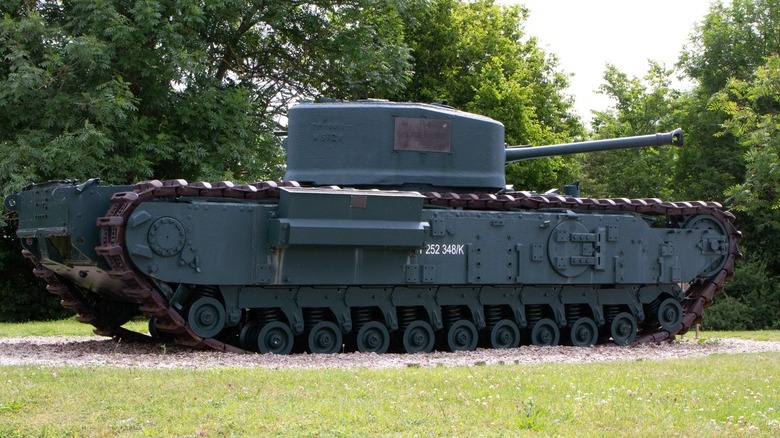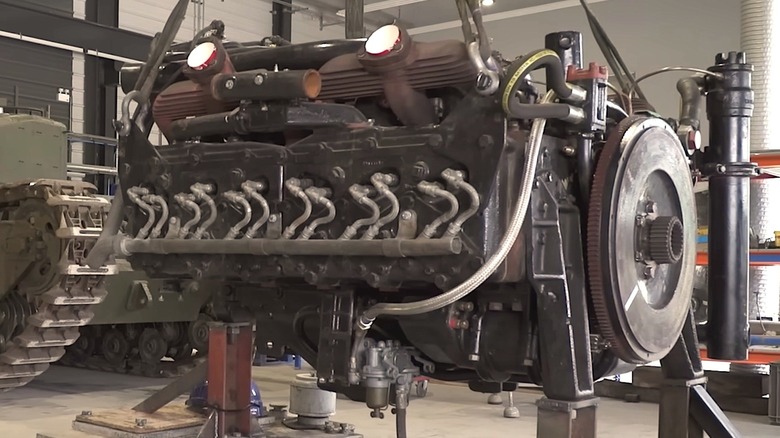This Engine Powered The Legendary Churchill British Infantry Tank
World War II was a time of incredible innovation for virtually every country involved. That was particularly true for Great Britain, which was forced to kick its military machine into high gear to keep pace with the rapidly advancing German Armed Forces. Early in the conflict, British forces were focused on developing tanks that could combat the German Army's Panzer fleet on the battlefield, with the Churchill Tank proving one of the most enduring additions to England's Army.
The infantry tank was named after England's celebrated wartime prime minister Winston Churchill and commissioned in 1940 to replace the famed Matilda II tank, whose mobility shortcomings were becoming apparent when facing down Germany's more agile Panzers. Legendary British automaker Vauxhall Motors was tasked with developing the Churchill Tank, moving the Mark 1 model into mass production by the summer of 1941.
Though its speed topped out at just 15mph, the Churchill went into production boasting solid mobility and climbing ability, as well as a two-pounder gun in the turret and a 3-inch Howitzer mounted on the hull. As for its engine, the Churchill was powered by Vauxhall's Bedford 350 engine, a flat-12, 21-liter beast that pushed the 350 horsepower at 2,200 rpm mandated by the British War Department. Turns out the creation of that engine and the Churchill Tank it powered was a minor wartime miracle, with the infantry weapon going from concept to working prototype in just one year.
Development of Vauxhall's Bedford 350 engine was unusually fast
That incredible feat was accomplished with the guidance of Vauxhall's then Assistant Chief Engineer, Harold Drew, who led the task force responsible for bringing the first Churchill Tanks into existence. The development timeline was mercifully shortened, in part, because Vauxhall had previously worked on an engine for a tank project that was ultimately abandoned. Despite the modest head start, Drew and his crack team of engineers worked tirelessly to get the Bedford 350 into working shape in a beyond impressive 89 days.
With a working engine capable of moving the heavily armored, 38-ton tank Vauxhall's design team had in mind, considerable care also went into creating the vehicle's turning mechanisms, as increased agility was a primary goal in creating the Churchill. Drew and his team turned to a Merritt-Brown steering system to increase the tank's agility, as it utilized epicyclic gears that made it possible to regulate the tank's track speeds while cornering. The gearbox was then linked to the steering mechanism to aid the tank's ability to maneuver sharply in either direction.
Unfortunately, the gearboxes on early models were reportedly unreliable and required routine maintenance in the field, much to the chagrin of some tank operators. Despite the supposed shortcoming, after hitting the battlefield in 1942, nearly 6,000 Churchill tanks were manufactured for the war effort, becoming a mainstay for the British Infantry through the end of the conflict and arguably ranking among the most legendary tanks of World War II.

